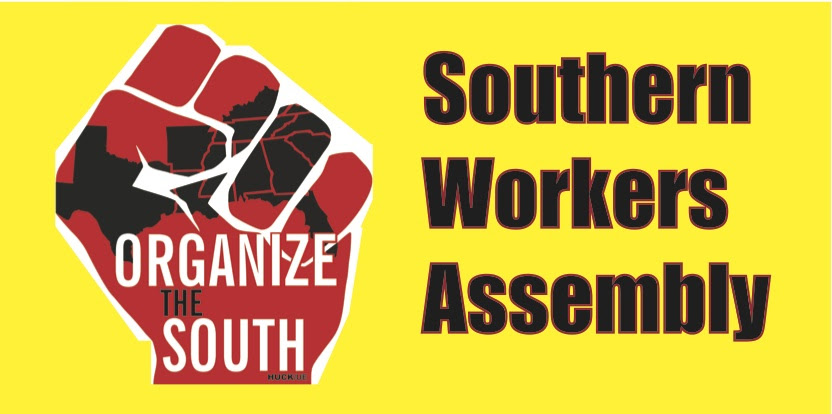Good Trouble Better South – Workers’ Collective Action
We build worker organization and political power through collective action. Workplace cadres build confidence and experience by taking on issues of wide concern in their workplaces. By doing so they attract and recruit a growing body of supporters, a militant minority. As cadres are formed in a number of important area workplaces, a network (the SWA local workers’ assembly) concentrates worker capacity to take on broader class issues of vital importance to all workers (calling card issues like $15 minimum wage, Medicare for All or Save Jobs Safe Lives).
At each step, built in from the very beginning of cadre formation, is collective action, the engine that makes organization go forward.
Collective Action At Work
Collective action (‘concerted activity’, means involving more than one worker) can include any action, demand, protest or inquiry regarding any workplace issue, dispute, or proposed/opposed change in terms of conditions of work. It includes the following activities –
- Petition the boss to make changes
- Request the boss meet and discuss issues with the workers
- Picket, boycott and strike the workplace
- Propose improvements in pay, conditions and handbook rules
- Wear buttons and other insignia
- Speak to other workers (but not disrupt work)
- Post and pass out literature (but not disrupt work)
Workers do not need a Union to engage in collective action. In fact these rights are unrelated to union organizing drives although they of course may be used to build union organization. Here is how these rights are explained in federal law (Section 7 of the National Labor Relations Act) –
Employees may engage “(1) in self-organization, to form, join or assist labor organizations, (2) engage in other concerted activities for the purposes of collection bargaining, or (3) mutual aid or protection.”
(NOTE this particular law applies only to some private sector workers, but similar protections exist in various federal and state laws. Workers should insist on these minimal rights regardless of law.)
Collective Action About Work Issues
The right to engage in ‘mutual aid and protection’ extends beyond the workplace as well. Workers may seek to improve their working conditions by appeals for public support, new legislation, and enforcement of existing state regulations.
Collective Action in the Community
As workers and as members of our community we are free to engage in the following activities which are protected by the First Amendment –
- Speak and pass out literature
- Protest, rally and march
- Picket and boycott
- Propose or oppose legislation
- Support candidates for office
- Engage in non-violent disruption and civil disobedience
For those who are employees of a governmental body, the First Amendment directly prohibits the public employer from interfering with these rights. For other types of employees and all non-employees, the First Amendment protects against governmental interference (like police orders to disperse, arrests, injunctions or other court orders) initiated by private parties.
Here is the text of the First Amendment to the United States Constitution –
“Congress shall make no law respecting an establishment of religion or prohibiting the free exercise thereof; or abridging the freedom of speech, or of the press; or the right of the people peaceably to assemble, and to petition the government for a redress of grievances.”
The exercise of First Amendment rights of speech, assembly and petition include association (to join or form organizations) and collective action to bring about political, social and economic change.
Solidarity
Solidarity is learned in practice, by acting together on behalf of one another. Rights must be claimed and used, or they do not exist. These truths are hard-learned. As the Southern Workers’ Assembly extends workplace networks through the South, solidarity and rights will take center stage once again.
